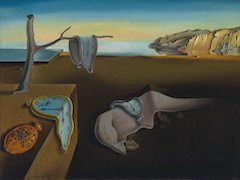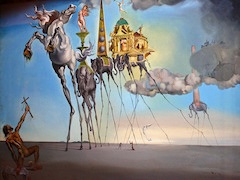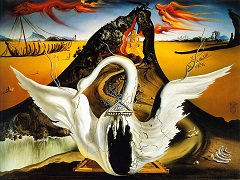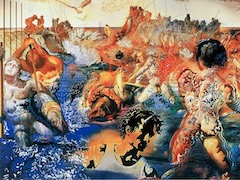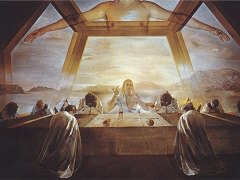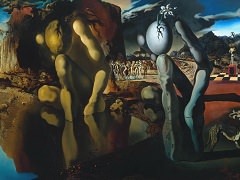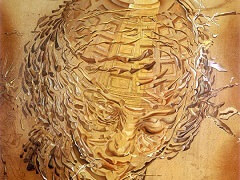Homage to Crick and Watson (Galacidalacidesoxiribunucleicacid), 1963 by Salvador Dali
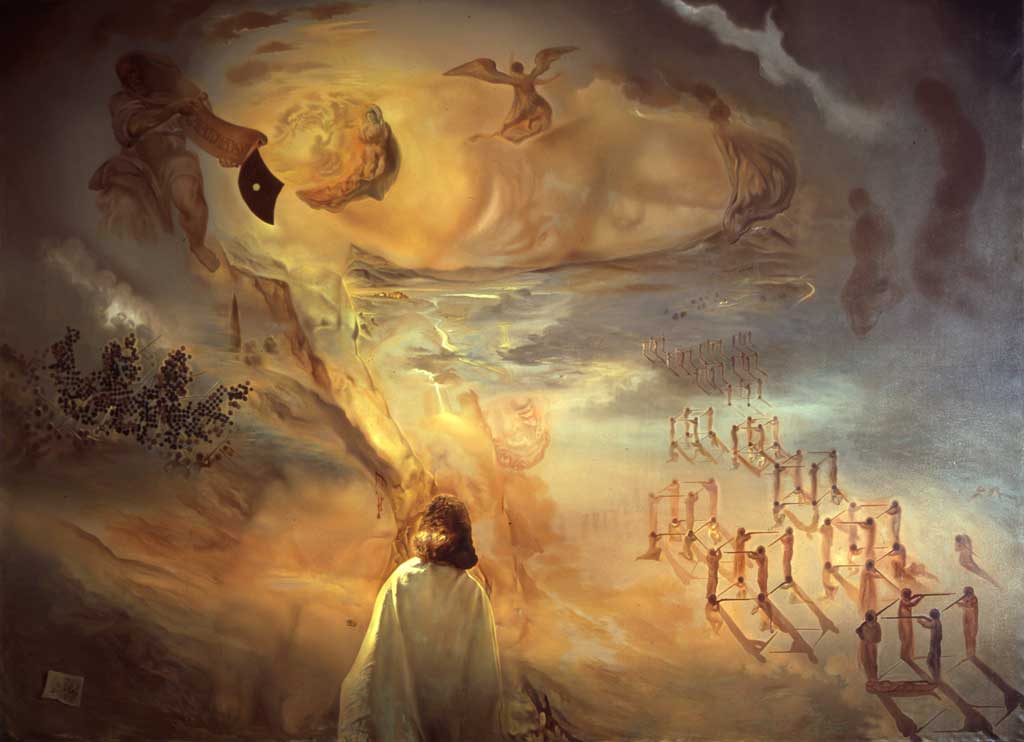
On September 26, 1963, the Rio Llobregat flooded just outside of Barcelona, killing more than four hundred people. In response Dali painted two canvases: Crista de Valles, which was sold to raise money for the flood victims; and the enormous Homage to Crick and Watson (Galacidalacidesoxiribunucleicacid), which symbolically commemorates the terrible event. In a dedication he wrote for the painting on the occasion of its exhibition in 1965, Dali explained his highly idiosyncratic iconography:
Dali conceived Homage to Crick and Watson as an elaborate cycle of birth, death, and rebirth. In the center left, the double-helix spiral of the DN A molecule represents the building-block of life, which is counterbalanced on the left by a group of Arab gunmen in "molecular" formations who signify death and self-annihilation, in addition to the scientific legacy of the Arabs in Spain. Above, God the Father extends his arm downward to lift up the dead body of Christ, as Gala, her coiffure in the form of a eucharistic crust of bread, looks on. Figures kneel in prayer before the image of God the Father, whose head contains an image of the Madonna and Child surrounded by angels. Floating in the clouds in the upper left is the Prophet Isaiah, who foretold the birth of Christ. In his hand is a scroll inscribed with the title of the painting.
Into the name of my own genetic memory I mix the name of my wife Gala, of Allah, that of the Cid Campeador (the feminine Cid) with that of desoxiribunucleic acid. The arm of the eternal God carries the man - Christ hack up to heaven as the Jesuit Father Teilhard de Chardin would have had it, thus verifying the Dalinian idea of the persistence of memory; in my own life, the persistence of memory of the history of Spain, my country, and of the Arab people, consubstantially mingled to the point that only the cybernetic machines of the future will be able to disentangle them with clarity, thanks to the microphysical structures of moire, mescaline of the retina

